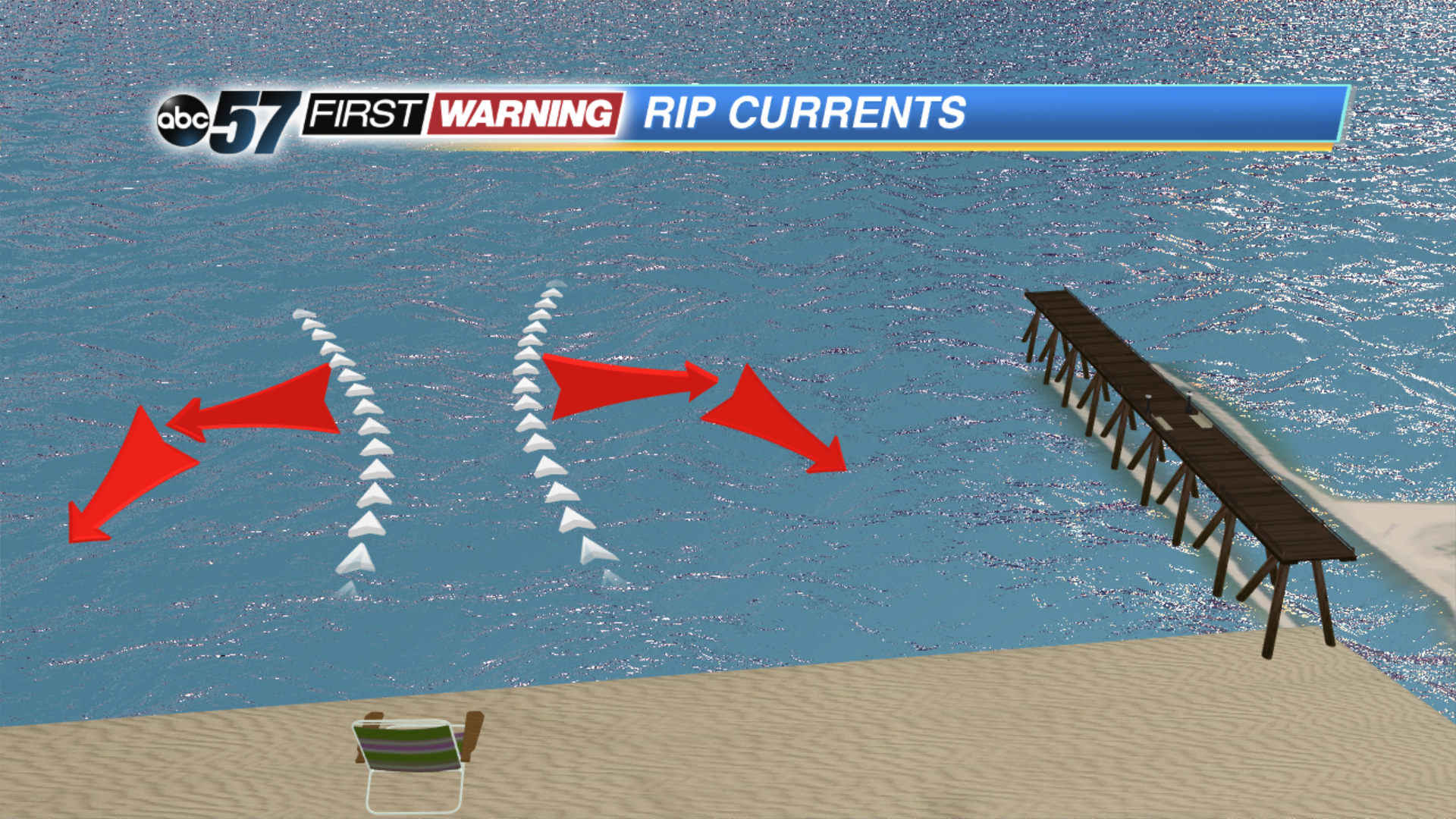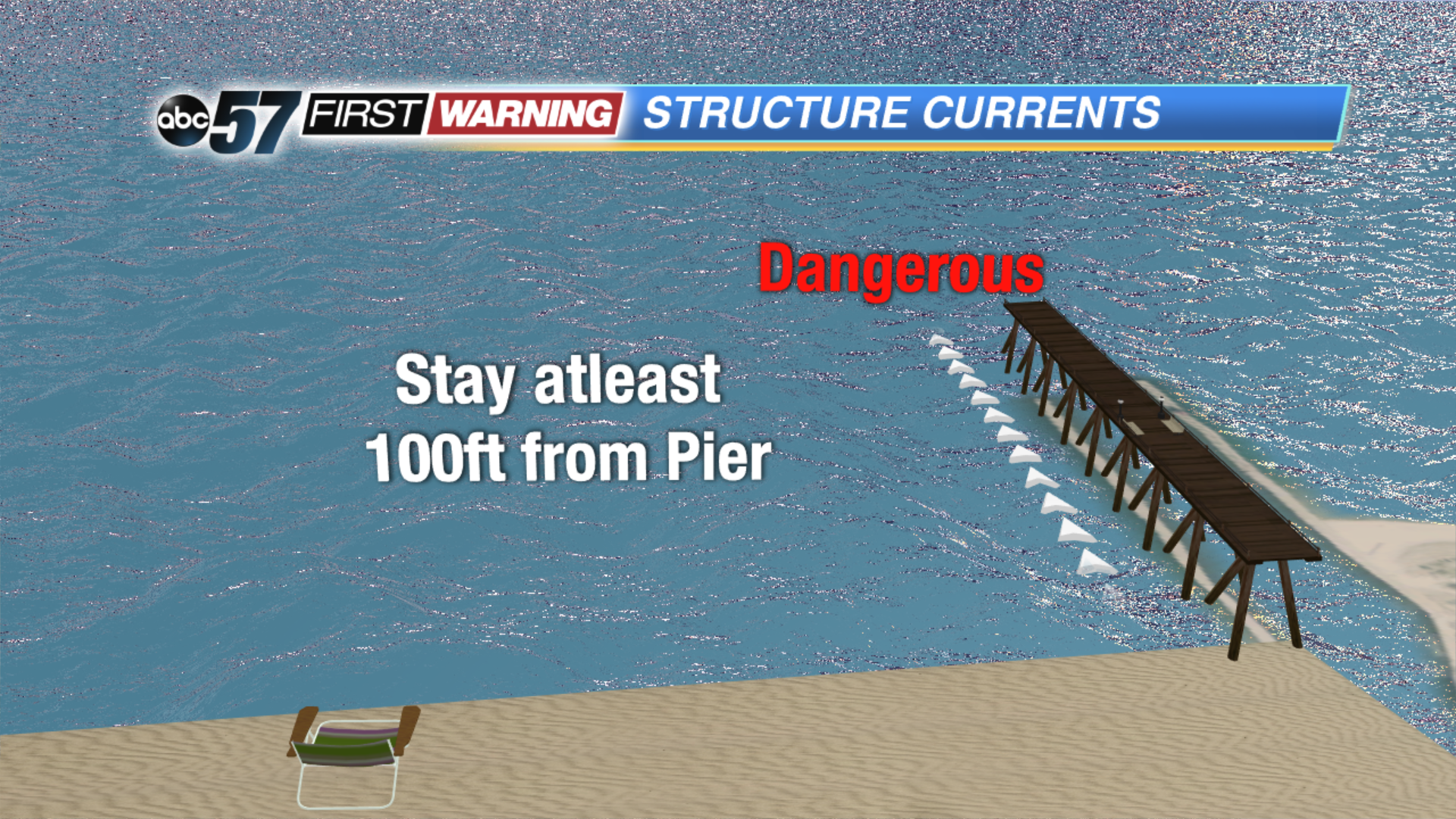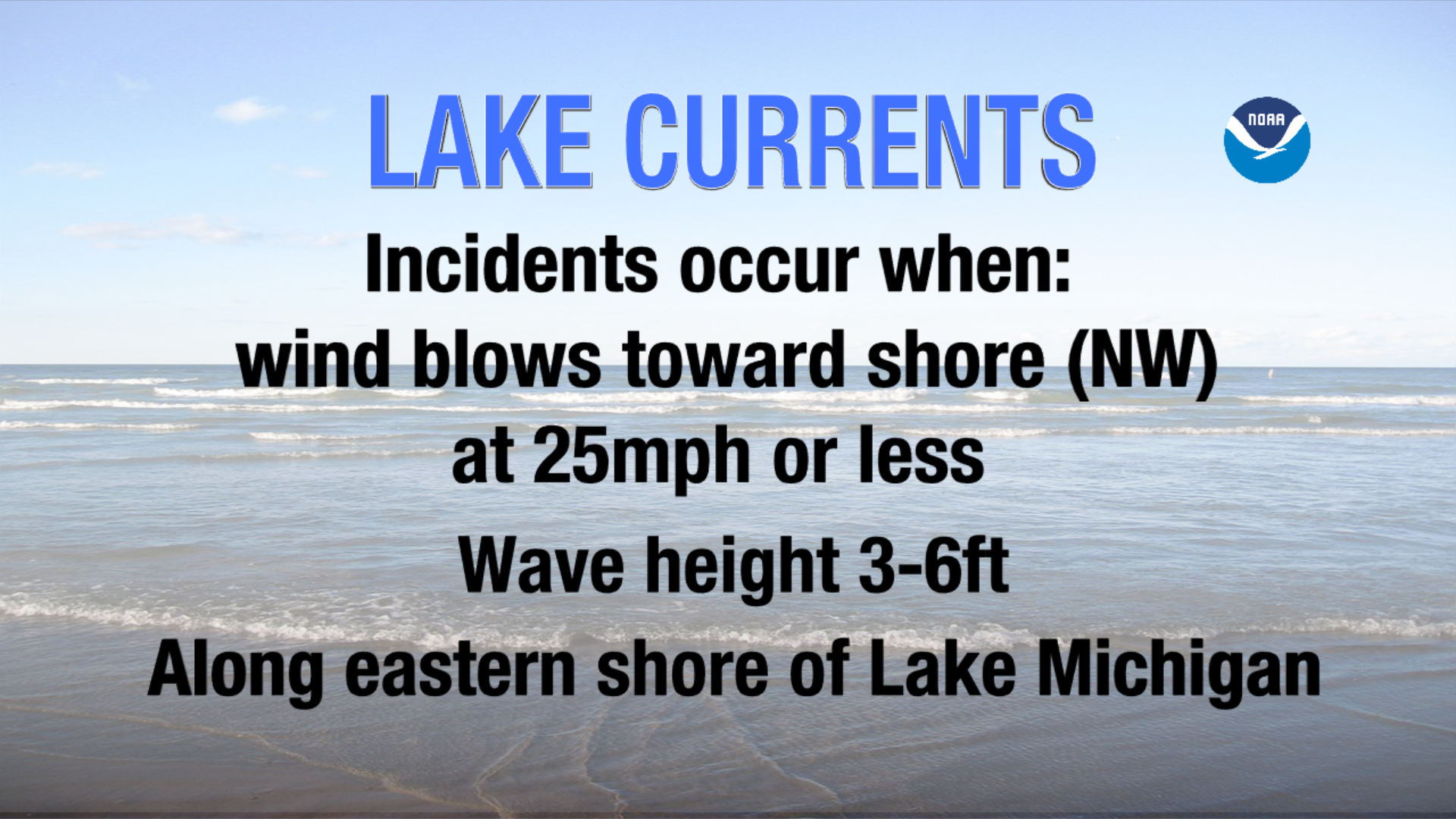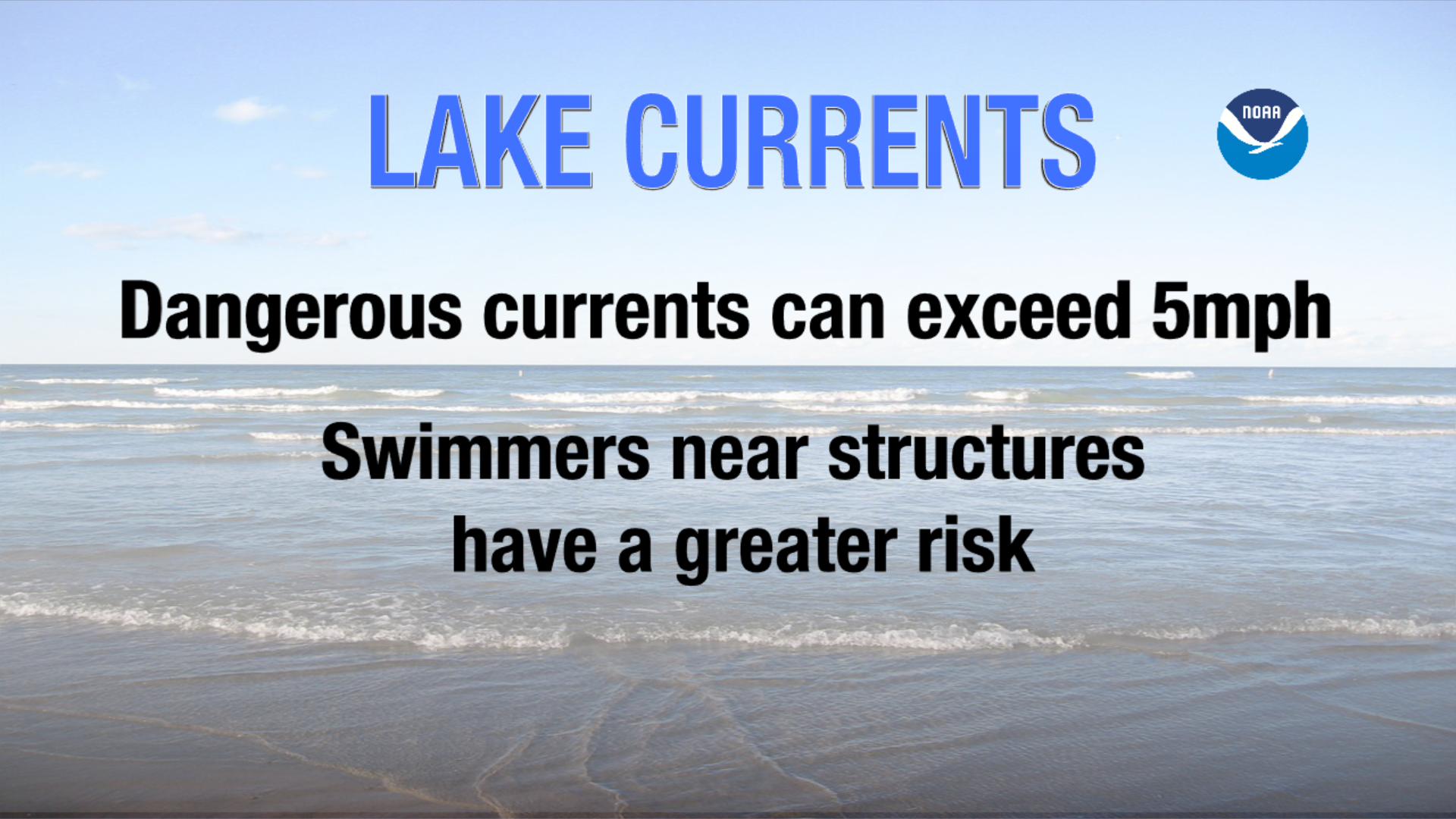Identifying rip currents
Red flags are nothing new to the Lake Michigan beaches in Michiana, but the highest number of deaths and rescues happen along the eastern shore of Lake Michigan when people do not take the flag system seriously. The currents that form during these rough waters are life threatening. In Lake Michigan, swimmers can come across several types of currents including structural and rip currents, channel currents, longshore currents and river channel currents. Let's learn about how to identify if dangerous currents are present.
Before heading down to the water, it is good practice to take a look at the lakeshore from a sand dune or higher ground. Doing this helps you to see if there are any spots where the water appears to be flowing away from shore. Below are a few examples and the identifying factors.
Rip currents form when water piles up onshore from frequent waves, causing pressure to build up. The water then creates a pathway back out to open water to escape the pressure. Strong rip currents can move as quick as five miles per hour away from shore. To escape the current, swim parallel to shore out of the current. If you witness someone in a rip current, and the lifeguard is off duty, throw the victim a flotation device.
Structure currents are another threat at Michiana's local beaches. The currents form in the same manner as a rip current, but along a pier or break wall. This current can be more risky to escape, so it is advised that swimmers stay at least one hundred feet from these structures.
You can prevent being caught up in a current by knowing when they are likely to form.
The water conditions will be better for the rest of the week, but next time the flag is yellow or red, now you know how to keep you and your family safe.
This information is from The Michigan Sea Grant's website. Go to their website to watch videos and learn more crucial safety tips.


















